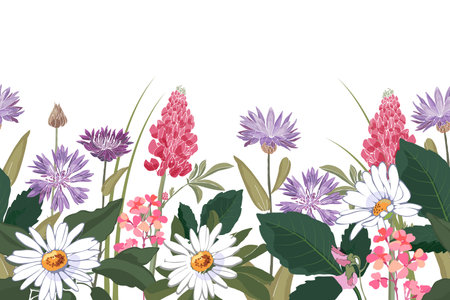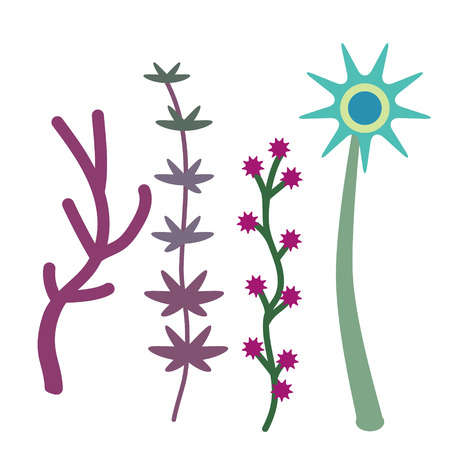1. Understanding the Role of Bulbs, Perennials, and Annuals
Creating a garden that stays colorful all year long starts with understanding the unique roles that bulbs, perennials, and annuals play in your landscape. Each plant type has its own strengths, blooming cycles, and maintenance needs. By combining them thoughtfully, you can enjoy continuous color from early spring through late fall—and even into winter in milder climates.
Bulbs: The Early Risers
Bulbs are often the first to bloom in the garden, bringing vibrant color just as winter fades. They store energy during their dormant period underground and burst into life when temperatures start to rise. Some popular spring-flowering bulbs include tulips, daffodils, crocuses, and hyacinths. Summer bulbs like lilies and dahlias extend color later into the season.
Key Features of Bulbs:
| Bulb Type | Bloom Time | Popular Varieties |
|---|---|---|
| Spring-Flowering | Late Winter to Spring | Tulips, Daffodils, Crocus |
| Summer-Flowering | Late Spring to Summer | Lilies, Dahlias, Gladiolus |
| Fall-Flowering | Late Summer to Fall | Sternbergia, Autumn Crocus |
Perennials: The Reliable Backbone
Perennials come back year after year and provide structure and consistency in your garden. While they may not bloom as long as annuals, they offer seasonal interest with their foliage and flowers. Examples include coneflowers, hostas, black-eyed Susans, and peonies.
Benefits of Perennials:
- Sustainability: Return each year with proper care
- Diversity: A wide range of colors and textures
- Saves Money: No need to replant every season
Annuals: The Season’s Showstoppers
If youre looking for non-stop color throughout a specific season, annuals are your go-to plants. They complete their life cycle in one growing season but offer bold blooms and rich colors. Common annuals include petunias, marigolds, zinnias, and impatiens.
Main Advantages of Annuals:
- Burst of Color: Bloom continuously for months
- Flexibility: Easily changed each year for new looks
- Pocket Fillers: Great for filling gaps between perennials or bulbs
The Power of Combining All Three
The secret to a colorful garden year-round is layering these three plant types strategically. Bulbs kick off the growing season with early color. Perennials provide lasting structure and fill out the garden as the season progresses. Annuals keep things vibrant during peak growing months and help bridge any gaps left by fading perennials or spent bulbs.
A Sample Seasonal Planting Timeline:
| Season | Main Color Source | Suggested Plants |
|---|---|---|
| Early Spring | BULBS | Daffodils, Tulips, Hyacinths |
| LATE Spring to Early Summer | BULBS + PERENNIALS | Iris, Peonies, Alliums |
| MID TO LATE Summer | BULBS + PERENNIALS + ANNUALS | Lilies, Coneflowers, Zinnias, Marigolds |
| LATE Summer to Fall | PERENNIALS + ANNUALS + FALL BULBS | Asters, Sedum, Mums, Autumn Crocus |
This thoughtful mix ensures that something is always blooming or adding visual interest in your garden no matter the time of year.
2. Planning for Seasonal Succession
To keep your garden bursting with color all year long, its essential to plan for seasonal succession. This means selecting a mix of bulbs, perennials, and annuals that bloom at different times throughout the year. By staggering bloom times, you’ll ensure there’s always something eye-catching in your landscape, no matter the season.
Understanding Bloom Periods
Different plants thrive during specific seasons. Knowing when certain flowers bloom helps you create a planting schedule that keeps your garden vibrant from early spring through winter.
Bloom Time Overview
| Season | Plant Types | Examples |
|---|---|---|
| Early Spring | Bulbs | Daffodils, Crocus, Hyacinths |
| Late Spring to Early Summer | Perennials & Bulbs | Tulips, Alliums, Peonies |
| Summer | Perennials & Annuals | Daylilies, Coneflowers, Zinnias, Marigolds |
| Fall | Perennials & Annuals | Asters, Sedum, Chrysanthemums |
| Winter (Mild Climates) | Cool-season Annuals & Evergreens | Pansies, Ornamental Kale, Hellebores |
Selecting Plants for Continuous Color
A good rule of thumb is to choose at least one plant that blooms in each season. Combine early-blooming bulbs with summer-loving annuals and fall-flowering perennials. In warmer regions, even winter can have pops of color with cold-tolerant plants.
Tips for Success:
- Layer Your Plantings: Place early spring bulbs beneath later-blooming perennials so new growth hides fading blooms.
- Add Foliage Interest: Use ornamental grasses or evergreen shrubs to fill in gaps between bloom cycles.
- Rotate Annuals: Swap out cool-season and warm-season annuals as the weather changes for non-stop color.
- Consider Light Needs: Match plants with similar sun and shade requirements to make maintenance easier.
Create a Bloom Calendar
A simple way to plan is by creating a month-by-month bloom calendar. This helps you visualize where you may have gaps and need to add more variety.
| Month | Main Bloomers |
|---|---|
| March-April | Crocus, Daffodils, Hyacinths |
| May-June | Tulips, Alliums, Peonies, Iris |
| July-August | Zinnias, Coneflowers, Black-eyed Susans |
| September-October | Asters, Mums, Sedum |
| November-February (mild zones) | Pansies, Kale, Hellebores |
With a little planning and the right mix of plants, you can enjoy continuous waves of color that transform your garden into a living work of art all year long.

3. Designing with Color and Texture in Mind
Creating a vibrant, year-round garden means more than just planting bulbs, perennials, and annuals—it’s about how you combine them. By thoughtfully mixing plants with complementary colors, textures, and heights, you can build a landscape that feels dynamic and balanced through every season.
Choose Complementary Colors
Start by selecting flower colors that enhance each other. Pair warm tones like yellows and oranges with cool tones like purples and blues for contrast. Or go for a monochromatic look using various shades of one color for a soothing effect.
| Color Scheme | Examples of Plant Combinations |
|---|---|
| Warm & Cool Contrast | Daffodils (yellow) + Salvia (purple) + Marigolds (orange) |
| Monochromatic Blues | Grape Hyacinths + Blue Delphinium + Lobelia |
| Soft Pastels | Tulips (light pink) + Lamb’s Ear (silvery foliage) + Alyssum (white) |
Play with Texture
The right mix of leaf shapes and surface textures adds visual interest even when flowers aren’t blooming. Combine broad-leafed plants like hostas with finer-textured ones like ornamental grasses or ferns.
Texture Pairing Ideas:
- Lilies (smooth leaves) with Russian Sage (wispy texture)
- Alliums (bold flower heads) with Creeping Jenny (low, trailing foliage)
- Iris (upright form) with Lamb’s Ear (soft, fuzzy leaves)
Think About Height and Structure
A well-designed garden has layers—tall plants in the back or center (for island beds), mid-height plants in the middle, and low growers at the front. This not only creates depth but ensures that all plants get enough sunlight.
| Plant Height Tier | Examples |
|---|---|
| Tall (Back) | Hollyhocks, Sunflowers, Gladiolus |
| Medium (Middle) | Echinacea, Daylilies, Daffodils |
| Low (Front) | Pansies, Crocuses, Creeping Phlox |
Create Seasonal Transitions
Select bulbs that bloom early in spring, perennials that carry through summer, and annuals to fill gaps as needed. This ensures there’s always something blooming or visually interesting from one season to the next.
Pro Tip:
If youre working with limited space, consider layering different plant types in the same bed—bulbs beneath perennials and annuals—to make the most of your garden real estate without overcrowding.
This thoughtful approach to color, texture, and structure will help you craft a garden that’s both beautiful and ever-changing throughout the year.
4. Site Selection and Soil Preparation
Creating a vibrant, year-round garden with bulbs, perennials, and annuals starts with choosing the right spot and giving your soil some love. Without proper site selection and soil prep, even the healthiest plants can struggle to thrive. Heres how to set your garden up for success from the ground up.
Pick the Right Spot
Different plants have different needs, but most bulbs, perennials, and annuals prefer full sun or partial shade. Take note of how much sunlight your garden area gets during the day. Heres a quick guide:
| Light Level | Hours of Sunlight | Best Plant Types |
|---|---|---|
| Full Sun | 6+ hours/day | Tulips, Daffodils, Coneflowers, Zinnias |
| Partial Shade | 3–6 hours/day | Hostas, Bleeding Hearts, Impatiens |
| Full Shade | <3 hours/day | Ferns, Astilbe (limited bulbs work here) |
Check Drainage and Air Flow
A soggy garden bed is a no-go for most bulbs and many flowering plants. Good drainage prevents root rot and keeps your plants healthy. Avoid low-lying areas where water tends to collect after rain. Also consider air circulation—good airflow reduces disease risk and encourages strong growth.
Soil Preparation Basics
Once youve picked a great location, its time to prepare the soil. Healthy soil = happy plants! Here’s what you need to do:
1. Test Your Soil
You can pick up an inexpensive soil test kit at most garden centers or county extension offices. It will tell you your soils pH level and nutrient content. Most flowering plants prefer a slightly acidic to neutral pH (6.0 to 7.0).
2. Improve Texture and Fertility
If your soil is too sandy or has heavy clay, mix in organic matter like compost or aged manure to help with water retention and drainage.
3. Add Bulb-Friendly Amendments
Bulbs especially love loose, well-draining soil. Consider adding a handful of bone meal or bulb fertilizer when planting them in the fall or spring.
Create Layers for Year-Round Color
A well-prepared bed allows you to layer different plant types together—bulbs beneath perennials, with room for annuals on top during warmer months. This layered approach ensures there’s always something blooming.
Layering Example:
| Layer | Plant Type | Season of Interest |
|---|---|---|
| Bottom Layer | Spring-flowering bulbs (e.g., Tulips) | Early Spring |
| Middle Layer | Perennials (e.g., Daylilies) | Late Spring to Summer |
| Top Layer | Annuals (e.g., Petunias) | Summer to Fall |
A little planning goes a long way when it comes to picking your spot and prepping the soil. When you get these basics right, your garden will reward you with color all year long.
5. Maintenance Strategies for Continuous Bloom
To keep your combination of bulbs, perennials, and annuals looking vibrant throughout the year, its essential to follow a few simple maintenance strategies. These practices help ensure that each plant type gets what it needs to thrive, while also supporting a seamless transition from one blooming season to the next.
Watering Wisely
Consistent watering is key, but each plant type has slightly different needs. Bulbs generally prefer well-drained soil and less water once their foliage starts to die back. Perennials usually need steady moisture during their growing season, while annuals may require more frequent watering during hot summer months.
| Plant Type | Watering Needs |
|---|---|
| Bulbs | Moderate; reduce after blooming |
| Perennials | Regular during active growth |
| Annuals | Frequent, especially in heat |
Feeding Your Plants
Fertilizing helps sustain blooms and healthy foliage. Use a balanced slow-release fertilizer in early spring for bulbs and perennials. Annuals benefit from monthly feeding during their growing season to encourage continuous flowering.
Fertilizer Tips:
- Bulbs: Apply bulb fertilizer when planting and again after blooming.
- Perennials: Use compost or a balanced fertilizer in spring.
- Annuals: Feed every 4-6 weeks with a liquid bloom booster.
Deadheading for More Blooms
Removing spent flowers (deadheading) encourages many plants—especially annuals and some perennials—to produce more blooms. This also keeps your garden looking tidy and fresh.
Common Plants That Benefit from Deadheading:
- Zinnias
- Petunias
- Daisies
- Coneflowers (Echinacea)
- Lilies (remove faded blooms but leave foliage until yellow)
Dividing Overgrown Perennials and Bulbs
Every few years, bulbs and perennials may become crowded and stop blooming as vigorously. Dividing them not only rejuvenates growth but also gives you more plants to spread around your garden or share with friends.
When to Divide:
- Spring-flowering bulbs: Late summer or early fall after foliage dies back
- Perennials: Every 3–5 years, typically in spring or fall depending on the variety
A little regular care goes a long way toward maintaining colorful, healthy mixed plantings all year long. By learning the specific needs of your bulbs, perennials, and annuals—and giving each the attention they need—youll enjoy an ever-changing display of blooms from season to season.


